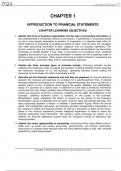Exam (elaborations)
Test Bank for Financial Accounting Tools For Business Decision Making 10th Edition Paul D. Kimmel, Jerr||Latest 2024 Verified by expert||ANSWERSHEETPublisher Wiley; 10th edition (December 2, 2021) Loose Leaf 896 pages ISBN-10 1119791081 ISBN-13 978-11
- Course
- Institution
Test Bank for Financial Accounting Tools For Business Decision Making 10th Edition Paul D. Kimmel, Jerr||Latest 2024 Verified by expert||ANSWERSHEET Publisher Wiley; 10th edition (December 2, 2021) Loose Leaf 896 pages ISBN-10 1119791081 ISBN-13 978-1119791089 Item Weight 3.44 p...
[Show more]



